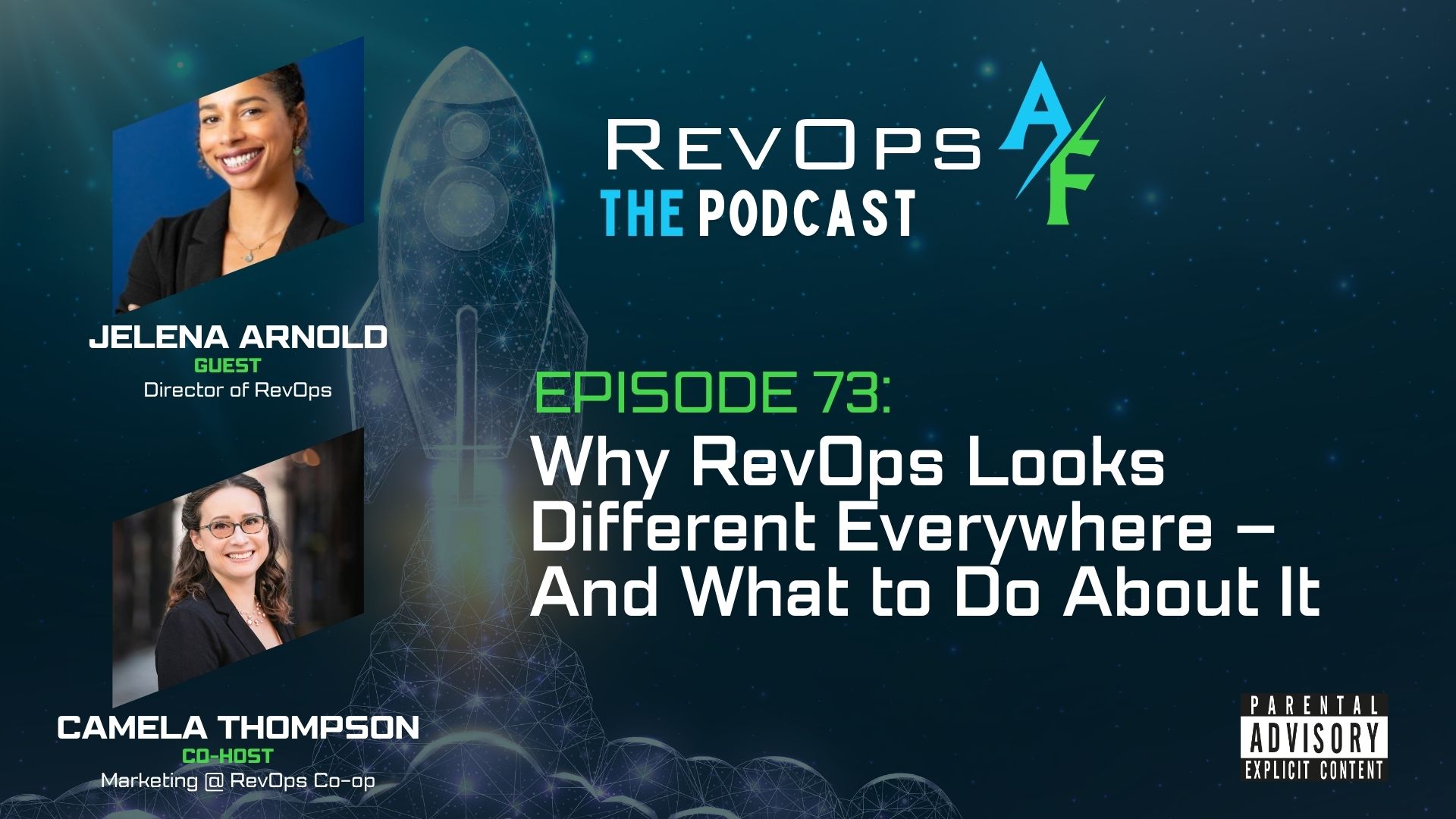
Episode 73: Why RevOps Looks Different Everywhere — And What to Do About It
Why RevOps looks different everywhere and what to do about it. Expert insights on organizational structure, executive alignment, and change management.
In this episode of the RevOpsAF podcast, co-host Matthew Volm, CEO and Founder of RevOps Co-op, sits down with Daphne Costa Lopes, Global Director of Customer Success for Strategic Accounts at HubSpot and creator of the This Is Growth newsletter and podcast.
With a portfolio that includes HubSpot’s largest global customers (representing less than 1% of accounts but a massive share of revenue), Daphne has a unique vantage point: she’s led both regional and global CS teams, built scalable customer programs, and spends her off-hours evangelizing best practices to 15,000+ newsletter subscribers. In this conversation, she unpacks the three critical stages of customer value — definition, delivery, and measurement — and explains why getting this right is a top-line growth lever most companies ignore.
At its simplest, customer value is why your product exists — the specific business problem it solves and the measurable impact it creates. But too often, value definition gets stuck in a department, with Sales, CS, or Product each building their own interpretation.
“Customer value is not something that you define in a department… it has to be defined at the most strategic level in your organization.” – Daphne Costa Lopes
Daphne stresses that defining value is a C-level, top-down exercise. For startups, that’s the founders; for scale-ups and enterprises, it’s the executive team. Without this alignment, each function sells or delivers something slightly different — eroding trust and creating friction across the customer lifecycle.
RevOps Takeaway: If your leadership hasn’t articulated the top 3–5 business outcomes your product delivers (and how you measure them), push for an executive working session. This isn’t a “nice to have” — it’s the foundation for consistent messaging, sales qualification, product prioritization, and CS success planning.
Once leadership defines value, the next step is making it measurable. Many companies stop at aspirational statements (“We improve productivity!”), but customers and CS teams need hard evidence:
Daphne gives the example of a risk-mitigation AI company serving construction firms. Their product’s “value” was that nothing happened — no accidents or lawsuits. Hard to measure, right? Instead of chasing an impossible ROI number, they tracked proxy metrics: average time from safety alert to resolution, percentage of alerts resolved, and industry ranking for lowest incidents. These metrics proved their software was preventing costly events, even without tying it directly to dollars saved.
RevOps Takeaway: Proxies are your friend. You don’t need a perfect financial model to prove value — you need clear, relevant indicators your customer believes.
Business value is what keeps the account; persona value is what keeps users engaged. Daphne warns that many companies ignore this second layer.
Take HubSpot’s marketing automation product:
“Most companies aren’t tracking persona data well, and even when they capture it once, it’s obsolete in a year.”
For RevOps, this means building systems to capture and refresh persona data, whether through product telemetry, enrichment tools, or CSM workflows. Without it, your onboarding and adoption programs can’t be personalized, and users won’t fully realize the product’s potential.
For a playbook on designing customer journeys that resonate across personas—and align teams end to end—check out our guide on building a buyer journey that delights customers and unifies GTM functions.
At HubSpot, value delivery isn’t left to chance. CS Ops built a value score — an internal health metric that:
If a customer buys Marketing Hub to generate leads but isn’t using forms or ad tools, the score flags a gap. CSMs can then tailor outreach — for strategic accounts, that’s a direct conversation; for SMBs, it’s an automated nurture track or guided product tour.
RevOps Takeaway: Your “value score” is the customer-facing equivalent of lead scoring in marketing. It lets CS prioritize intervention, Product identify adoption blockers, and Marketing craft targeted enablement content.
Need inspiration on leveraging data and automation to support GTM teams? See our article on how RevOps helps marketers do more with less via optimized systems.
If you don’t have a formal value framework, Daphne recommends a scrappy but structured starting point:
If you have budget, tools like Hook or Gainsight can accelerate this process by merging CRM and product telemetry to surface leading indicators automatically.
CS can be an afterthought in growth strategy — which Daphne sees as a costly mistake. Even in hyper-growth mode, churn can wipe out new revenue gains.
“If you care about business growth, you should care about retention… You don’t work in an infinite market.”
The economics are straightforward:
RevOps Takeaway: Tie your retention work to revenue math in QBRs and board updates. Show how reducing churn by 2–3 points equals millions in preserved ARR — often with a higher ROI than sales headcount.
To see how RevOps can operationalize retention through structured forecasting, don’t miss our recorded webinar on mastering renewal forecasting for sustainable growth.
Throughout the conversation, Daphne calls out how RevOps can enable CS teams to deliver value at scale:
When CS and RevOps are aligned on metrics and strategy, value delivery becomes a shared, repeatable motion — not a heroic effort by individual CSMs.
Key Takeaways for RevOps Leaders:
Looking for more great content?
Looking for more great content? Check out our blog, join our community and subscribe to our YouTube Channel for more insights.
Our average member has more than 5 years of RevOps experience. That means you’ll have real-time access to seasoned professionals. All we ask is that you’re generous with your knowledge in return.